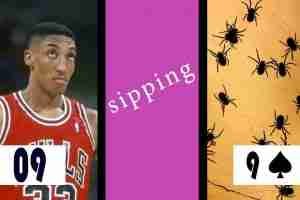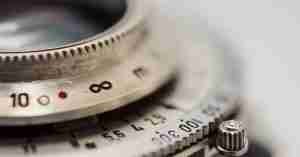What is the Major System?
The Major System is a mnemonic technique used to enhance the memorization and recall of numbers, playing cards, and dates. It involves converting numbers into corresponding consonant sounds and forming words with added vowels. The idea is that meaningful words are easier to remember than random numbers.
A Brief History
The origin of the Major System is a topic of debate among mnemonic historians. Some claim that it is named after a man named Major Beniowski, who is said to have created the system. However, there is little evidence to support this claim, and it is unlikely that he coined the term “Major System.”
The earliest known version of the Major System can be traced back to the early 17th century, with the work of French mathematician Pierre Herigone. Throughout the century, the German mathematician Stanislaus Mink von Wennsshein made several improvements to the system, further developing its structure and effectiveness.
Over the next two centuries, many other academics sought to modify the system, often adding vowels and consonants in a more complex system. However, it was not until 1825, when Aime Paris published his version of the Major System, that the system closely resembled its current form. Paris’s version of the system was widely adopted and is considered by many to be the most effective and widely used version of the Major System. Therefore, while many people contributed to the development of the Major System, it is Paris who is most credited with the system as it is known today.
An Example
The number that I want to remember is: 53101740039633.
At the foot of my driveway, an angry lama stood in wait. Every few seconds, he gave the taser in his hand a little test, listening to the sound of fifty-thousand volts shoot between the leads.
Finally, he saw his enemy lying in wait across the hood of my car: the taco. The lama rushed forward and zapped the taco. With the job done, the lama raced towards the front door, only to be met by the bartender from Cheers, Sam Malone.
Sam pushed the lama over. Proud of himself, Sam turned the handle and opened the door, where a mime stood guard.
Simplified, it goes: The lama tased a taco, then raced to the door where Sam pushed the lama over. He opened the door and met a mime.
That’s how I remembered the number: 53101740039633.
How it Works
In the example above, I’ve employed a combination of three different mnemonic techniques to make the number vivid and memorable.
First, I’ve used the Link System to organize the images in a logical order, and applied the principles of exaggeration, movement, substitution, and absurdity to make the images more memorable.
I’ve then used a Memory Palace, specifically my front yard, to give the images a familiar and relatable context.
Finally, I’ve employed the Major System to remember the numbers themselves, converting them into corresponding consonant sounds and forming words to make them more memorable.
By using these three techniques together, it is possible to remember any number, even long strings of numbers such as a social security number, credit card number or phone number. The key is to not focus on remembering numbers, but instead to recall a story or image associated with the numbers. This is how memory masters are able to memorize long sequences of numbers, such as the current world record of 70,000 digits of pi recited by Rajveer Meena from India on March 21, 2015.
Converting Numbers to Consonants
The chart below illustrates the standard letter-consonant association in the Major System. While some individuals may choose to create their own chart, there is no need to do so as these number-consonant pairs have been widely used and accepted for a long time.
| Number | Consonant Sounds | Rationale |
|---|---|---|
| 0 | s, z, soft c | Similar sounds to z in zero. |
| 1 | t, d | The single downstroke, like 1. |
| 2 | n | A tilted 2 looks similar to n. |
| 3 | m | A tilted 3 looks like an m. |
| 4 | r | The last letter of four is r. |
| 5 | l | L is the roman numeral for 50. |
| 6 | sh, ch | Because... why not? |
| 7 | k, hard c | Capital K has two 7s in it. |
| 8 | f, v | An f in cursive has two loops like an 8. |
| 9 | p, b | P is a mirror image of 9. |
| Unassigned | Vowels | To be used anywhere without changing a word's # value. |
Once we have mastered the numbers to consonants, we can apply this knowledge to words and phrases.
Different Styles
After converting numbers to letters using the Major System, we can begin to create associations by forming words. There are two ways to approach this:
Convert numbers to letters on the fly and create words as we go, but this method is slow and inefficient as it requires coming up with unique images on the spot, which can lead to stumbling and forgetting the pictures.
Create a permanent set of images that can be easily recalled as we encounter the numbers. The vowels chosen do not affect the associated number as they are considered “free” and the word should be easy to visualize. For example, the number one could be associated with the word “toe” or “tea.”
When assigning permanent words to numbers, one could only use the first ten digits (0-9) or assign terms to one hundred digits (00-99). Memory competitors may have images set for one thousand numbers to avoid repetition. However, for most purposes, it is not necessary to have a thousand different images.
Making it Work
Let’s consider two different examples to demonstrate how the Major System can be used to encode numbers.
Using a small ten-number system, we can break down the number 32 into 3 and 2. We could associate the words “me” for 3 and “Neo” (from the Matrix) for 2, creating an image of “me” and “Neo” doing something together to remember the number 32.
Using a hundred-number system, the number 32 is simply 32, and we only need to remember something with an “m-n” pair. “Moon” could be used as an association to remember 32. Other options may include “main,” “mean,” “amen,” “many,” or “man.” It is important to use words that are easiest for you to remember when creating a list of associations.
The advantage of using a small ten-number system is that it doesn’t take long to memorize ten items. The disadvantage is that it’s one-to-one, making it easier to recall ten images than ten numbers, but we still need to remember ten things.
The advantage of using a more extensive hundred-number system is that we can remember twenty numbers with only ten things. However, it takes more time to memorize the chart.
Tips
When selecting images to correspond with numbers, it is essential to make them as visual as possible. When converting numbers to images in your mind, use vivid and striking images, incorporating the principles of exaggeration, movement, substitution, and absurdity to make them more memorable.
If you find yourself struggling to remember the image associated with a number, approach it methodically. First, remember the connection between the consonants and numbers. Then, work through the vowel sounds: first “a,” then “e,” “i,” “o,” and “u.” This will help you piece together the word, as we have used a solid strategy to create the word bank.
Once you have associated numbers with words, you can either create a story out of them or use a Memory Palace to place each word in a specific location.
Creating Lists
Now, you can create your list of words for a personalized major system. I’ll provide lists for both ten and one hundred word major systems below. Please feel free to use them all, or some of them, or none. After the list, you will find a quiz for you to test yourself.
Here is a simple 11 number list that you can use. Using a small list is excellent if you’re new to memory systems.
0 – Sauce
1 – Toe
2 – Neo
3 – Ma
4 – Ray
5 – Lay
6 – Jaw
7 – Key
8 – Foe
9 – Pa
For larger numbers, it’s best to double the digits. It helps chunk information into more efficient bits. This is the system that I used in the example above.
The data gets divided into two-digit numbers like this: 53 – 10 – 17 – 40 – 03 – 96 – 33.
Here is the complete list:
00 – Sauce
01 – Stew
02 – Snow
03 – Sam
04 – Sari
05 – Sail
06 – Sushi
07 – Suck
08 – Sieve
09 – Sap
10 – Tase
11 – Teat
12 – Tuna
13 – Team
14 – Tree
15 – Tail
16 – Teach
17 – Taco
18 – Toffee
19 – Tap
20 – Nose
21 – Nut
22 – Nan
23 – ‘Nam (Like Viet Nam)
24 – Nero
25 – Nail
26 – Nacho
27 – Neck
28 – Nave
29 – Nap
30 – Maze
31 – Mat
32 – Moon
33 – Mime
34 – Mare
35 – Mail
36 – Mash
37 – Make
38 – Move
39 – Mop
40 – Race
41 – Rat
42 – Rain
43 – Ram
44 – Rear
45 – Roll
46 – Rash
47 – Rock
48 – Rave
49 – Rap
50 – Lose
51 – Laid
52 – Lane
53 – Lama
54 – Lure
55 – Lily
56 – Leech
57 – Lick
58 – Laugh
59 – Leap
60 – Cheese
61 – Shit
62 – Chain
63 – Chum
64 – Chair
65 – Chill
66 – Cha-cha
67 – Check
68 – Chef
69 – Shape
70 – Kiss
71 – Cat
72 – Can
73 – Came
74 – Car
75 – Kill
76 – Cash
77 – Kick
78 – Cough
79 – Cab
80 – Face
81 – Fight
82 – Fan
83 – Foam
84 – Fair
85 – Fall
86 – Fish
87 – Fake
88 – Fife
89 – Fab
90 – Pass
91 – Pet
92 – Pan
93 – Puma
94 – Par
95 – Peel
96 – Push
97 – Pack
98 – Puff
99 – Peep
Reflecting on the First Example
Remember the story in the example above? The short version is: the lama tased a taco, then raced to the door where Sam pushed the lama over. He opened the door and met a mime.
We can now piece it all together. The number 53 contains the sounds l and m. I created the word lama with those sounds. The rest are as follows:
53 (l – m) lama
10 (t – s) tase
17 (t – k) taco
40 (r – s) race
03 (s – m) same
96 (p – sh) push
33 ( m – m) mime
Last Words
The more time you invest in familiarizing yourself with the words and their numerical associations, the more efficient you will become at memorizing numbers. With practice, it won’t take long to become proficient in the Major System. As you continue to practice, you will also find that your ability to be creative and remember things will improve.
If you encounter difficulties with certain words, don’t hesitate to replace them with new words that work better for you. The key is to find associations that work best for your individual memory.
Quiz
Using the major system, memorize one set one numbers. Once you’ve learned the number, hide it, write the number down, and check it. Move on to the next.
446339
551398
161612
500043
457004
1055115
1505135
7225835
4023567
4817744
10072082
59885115
78490499
57039383
95980413
752858431
339642350
767189779
810012265
650999865
7369870539
6992254508
8077877468
1819411904
5174558629
632648595828
73172018768547
1418083445368522
958489993626299591
73944022453627202053
7032581144809186163684
923063955386114000670477909
1491801812622595321564906464655
2406089921812696646281388806402582330817683
33266235673922252700459217449858243740110035190499619
Join Conrad Andrews on Facebook to get updates on the latest techniques in learning.







